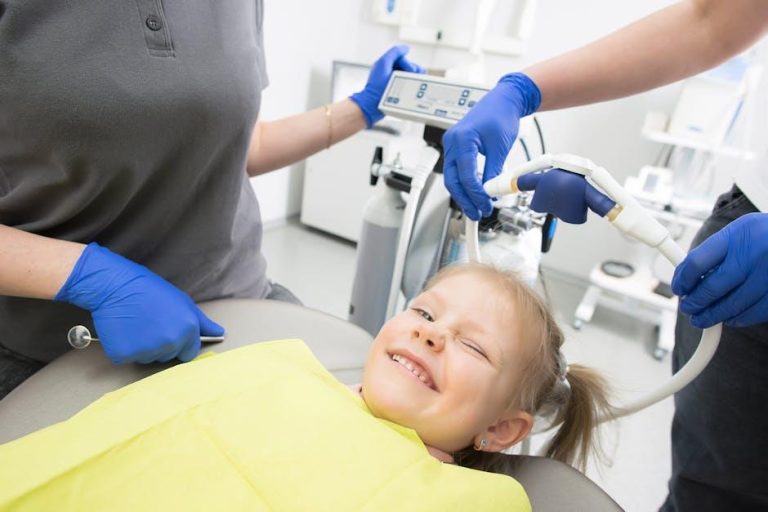1 in 3 Kids Has Dental Problems, Poll Finds – U.S. News & World Report
According to a recent poll highlighted by U.S. News & World Report, an alarming number of children in the United States are facing dental problems. The study reveals that one in three kids suffers from some form of dental issue, illuminating a critical public health concern that parents, educators, and healthcare professionals cannot afford to overlook.
Children’s oral health is not only vital to their overall health and well-being but also influences their confidence, nutrition, and academic performance. This article delves into the findings of the poll, explores the causes of dental problems in kids, provides essential prevention tips, and explains why immediate attention is necessary to protect young smiles nationwide.
Poll Overview: The Growing Concern of Kids’ Dental Problems
The U.S. News & World Report poll surveyed thousands of parents across the country to understand the state of children’s dental health. Key findings include:
- 1 in 3 children has experienced dental cavities, tooth decay, or other oral problems.
- Low-income families are disproportionately affected, with limited access to dental care.
- Many children suffer from untreated dental issues, leading to pain and difficulty eating or concentrating.
- Awareness and education about proper dental hygiene remain insufficient.
These results highlight the urgent need for proactive dental care and education targeting children and their families.
Common Dental Problems Faced by Kids
Understanding the types of dental issues children face is critical for prevention and treatment. Here are the most common dental problems affecting kids:
| Dental Issue | Description | Common Age Group |
|---|---|---|
| Tooth Decay (Cavities) | Destruction of tooth enamel caused by bacteria feeding on sugars. | 2-12 years |
| Gum Disease (Gingivitis) | Inflammation of gums due to plaque buildup, leading to redness and swelling. | 5+ years |
| Enamel Hypoplasia | Underdeveloped enamel that can cause tooth sensitivity and discoloration. | 0-5 years |
| Early Tooth Loss | Loss of baby teeth prior to the normal age range, impacting adult teeth alignment. | 3-7 years |
Why Are Dental Problems So Common Among Kids?
Several factors contribute to the high prevalence of dental problems among children in the U.S.:
- Poor Oral Hygiene Habits: Many children either lack the skill or motivation to brush and floss regularly, leading to plaque buildup.
- High Sugar Consumption: Frequent intake of sugary snacks and drinks provides food for bacteria that cause cavities.
- Limited Access to Dental Care: Socioeconomic disparities mean many families cannot afford routine dental visits or treatment.
- Lack of Parental Awareness: Some parents underestimate the importance of baby teeth health or miss early signs of dental problems.
- Fluoride Deficiency: Insufficient fluoride exposure reduces protection against tooth decay.
Benefits of Addressing Children’s Dental Problems Early
Timely intervention offers numerous advantages that affect a child’s long-term health and quality of life:
- Preventing Pain and Infection: Early treatment reduces discomfort and avoids severe infections.
- Improved Nutrition: Healthy teeth aid in chewing, ensuring proper nutrient intake.
- Boosted Self-Confidence: A bright smile encourages social interactions and emotional well-being.
- Better Academic Performance: Reduced dental pain means fewer school absences and better concentration.
- Long-Term Oral Health: Establishing good dental care habits minimizes future dental complications.
Practical Tips for Preventing Dental Problems in Kids
Parents and caregivers can take simple, effective steps to protect their children’s dental health:
- Start Early: Begin cleaning a baby’s gums even before teeth erupt, and introduce brushing as soon as teeth appear.
- Brush Twice Daily: Help children brush their teeth thoroughly for two minutes, especially before bedtime.
- Use Fluoride Toothpaste: Fluoride strengthens enamel and reduces the risk of cavities (use age-appropriate amounts).
- Limit Sugary Foods and Drinks: Cut back on sodas, candies, and juices that contribute to tooth decay.
- Schedule Regular Dental Visits: Teachers, pediatricians, and dentists recommend the first visit by age one or within six months of tooth eruption.
- Encourage Healthy Snacking: Offer fruits, vegetables, and dairy products that promote oral health.
- Educate About Oral Hygiene: Teach kids the importance of dental care using fun, interactive methods.
Case Study: Successful Dental Health Program in Schools
One innovative school district in California implemented a comprehensive oral health program after noticing high rates of untreated dental problems among students. The program included:
- On-site dental screenings and fluoride varnish applications.
- Educational workshops for students and parents about oral hygiene and nutrition.
- Partnership with local dental clinics for affordable care referrals.
Within a year, cavities among participating children dropped by 20%, and parents reported a significant increase in their kids’ brushing habits. This case demonstrates the power of community-based dental care initiatives in reducing children’s oral health issues.
Firsthand Experience: A Parent’s Perspective on Managing Kids’ Dental Issues
“When my son started complaining about tooth pain, I quickly realized how important it was to act fast. We visited a pediatric dentist who found multiple cavities. Thanks to early treatment and change in our daily habits, my son now enjoys brushing and loves choosing healthy snacks. It was a learning journey for our whole family—one that I hope other parents can avoid by staying proactive!”


